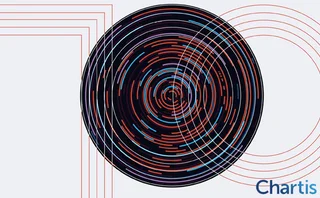
JP Morgan joins ISE via Actant
JP Morgan, the investment banking arm of JP Morgan Chase, has joined the International Securities Exchange (ISE) as a competing market maker, using the Actant Aqtor front-end platform for trade execution and risk strategies. JP Morgan will use Aqtor for market-making functions, including order entry, pricing models and writing custom trading strategies.
"Why do people go through proprietary development?" Kenety asked. "It’s not cost. In many cases, it costs more to build than buy. Firms believe they will get something they can’t get anywhere else. How to bridge that gap? Do it on a stand-alone basis."
Though the stand-alone trading station is considered enough to be a 'turnkey' solution, the Aqtor platform comes with a programming interface called Script Editor, which uses a protocol called QT Script. JP Morgan is using QT Script to integrate order flow and mesh proprietary modelling into Aqtor, formulating customised trading strategies that produce firm, fixed prices while limiting exposure to the market, Kenety said.
The document object model (DOM) API allows JP Morgan’s options traders to pass along Aqtor’s QTTrinomial pricing models into its own platforms as well. The vendor will most likely make improvements to future releases of Aqtor based on the customisation it performed for JP Morgan, Kenety said. Actant developers will continue to pass new ideas on to their colleagues at the firm. But the strategies that JP Morgan develops with Aqtor will stay at JP Morgan.
"With QT Script, we’ll write up a script that suggests how you can use it and they can take on that whole new behaviour by e-mail," Kenety said. "But we don’t have to know what scripts they write. It’s not an intellectual property issue."
Aqtor is deployed on Windows NT. Each trader’s workstation is customised for individual strategies and preferences, with each station acting as its own client and server, and all code running in one address space. Installation can take less than an hour, but the configuration can take one to three months, depending on how advanced the trader wants the application to be, Kenety said. When Aqtor is required to keep track of the entire desk’s positions, it can run in client-server mode.
Kenety could not disclose how many options traders currently use Aqtor for ISE access.
Only users who have a paid subscription or are part of a corporate subscription are able to print or copy content.
To access these options, along with all other subscription benefits, please contact info@risk.net or view our subscription options here: http://subscriptions.risk.net/subscribe
You are currently unable to print this content. Please contact info@risk.net to find out more.
You are currently unable to copy this content. Please contact info@risk.net to find out more.
Copyright Infopro Digital Limited. All rights reserved.
As outlined in our terms and conditions, https://www.infopro-digital.com/terms-and-conditions/subscriptions/ (point 2.4), printing is limited to a single copy.
If you would like to purchase additional rights please email info@risk.net
Copyright Infopro Digital Limited. All rights reserved.
You may share this content using our article tools. As outlined in our terms and conditions, https://www.infopro-digital.com/terms-and-conditions/subscriptions/ (clause 2.4), an Authorised User may only make one copy of the materials for their own personal use. You must also comply with the restrictions in clause 2.5.
If you would like to purchase additional rights please email info@risk.net
More on Technology
FX options: rising activity puts post-trade in focus
A surge in electronic FX options trading is among the factors fuelling demand for efficiencies across the entire trade lifecycle, says OSTTRA’s commercial lead, FX and securities
Dismantling the zeal and the hype: the real GenAI use cases in risk management
Chartis explores the advantages and drawbacks of GenAI applications in risk management – firmly within the well-established and continuously evolving AI landscape
Chartis RiskTech100® 2024
The latest iteration of the Chartis RiskTech100®, a comprehensive independent study of the world’s major players in risk and compliance technology, is acknowledged as the go-to for clear, accurate analysis of the risk technology marketplace. With its…
T+1: complacency before the storm?
This paper, created by WatersTechnology in association with Gresham Technologies, outlines what the move to T+1 (next-day settlement) of broker/dealer-executed trades in the US and Canadian markets means for buy-side and sell-side firms
Empowering risk management with AI
This webinar explores how artificial intelligence (AI) can strip out the overheads and effort of rapidly modelling, monitoring and mitigating risk
Core-Payments for business leaders: why real-time access to payment data is key to long‑term business success
Business leaders require easy access to timely, reliable and complete information across post-trade processes. Aside from the usual requirements of senior managers to optimise for risk, revenues and costs, they increasingly need to demonstrate to their…
Risk applications and the cloud: driving better value and performance from key risk management architecture
Today's financial services organisations are increasingly looking to move their financial risk management applications to the cloud. But, according to a recent survey by Risk.net and SS&C Algorithmics, many risk professionals believe there is room for…
Machine learning models: the validation challenge
Machine learning models are seeing increasing demand across the capital markets spectrum. But how can firms improve their chances of gaining internal and regulatory approval for these type of models?







